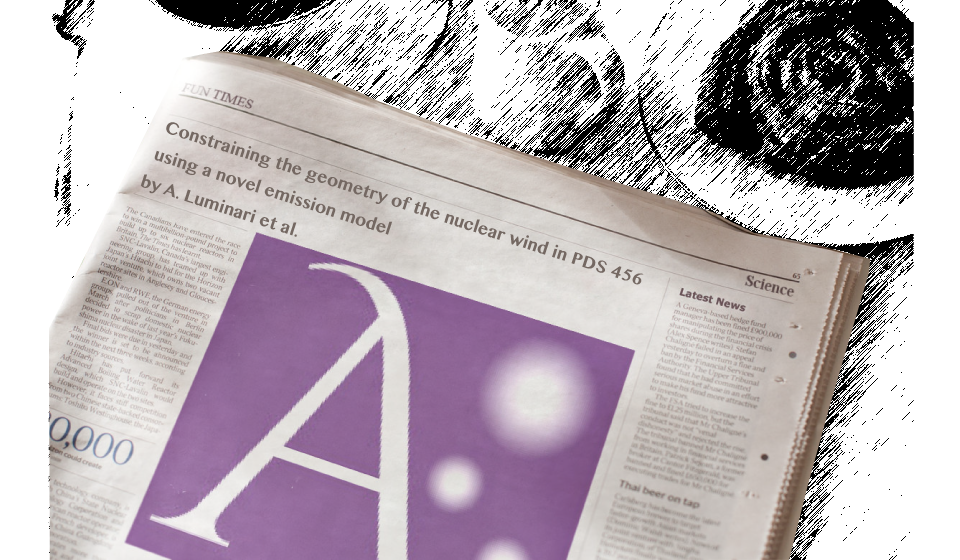
Constraining the geometry of the nuclear wind in PDS 456

By A. Luminari
Outflows from active galactic nuclei (AGN) are often invoked to explain the co-evolution of AGN and their host galaxies, and the scaling relations between the central black hole mass and the bulge velocity dispersion. Nuclear winds are often seen in the X-ray spectra through Fe K shell transitions and some of them are called ultra fast outflows (UFOs) due to their high velocities, up to some fractions of the speed of light. If they were able to transfer some percentage of the AGN luminosity to the host galaxy, this might be enough to trigger an efficient feedback mechanism. We aim to establish new constraints on the covering fraction and on the kinematic properties of the UFO in the powerful (L(bol) ~ 10^(47) erg/s) quasar PDS 456, an established Rosetta stone for studying AGN feedback from disk winds. This will allow us to estimate the mass outflow rate and the energy transfer rate of the wind, which are key quantities to understand the potential impact on the host galaxy. We analyze two sets of simultaneous XMM-Newton and NuSTAR observations taken in September 2013 and reported in Nardini et al. (2015) as having similar broadband spectral properties. We fit the Fe K features with a P-Cygni profile between 5 and 14 keV, using a novel Monte Carlo model for the WINd Emission (WINE). We find an outflow velocity ranging from 0.17 to 0.28 c, with a mean value of 0.23 c. We obtain an opening angle of the wind of 71(+13,-8) deg and a covering fraction of 0.7(+0.2,-0.3), suggesting a wide-angle outflow. We check the reliability of the WINE model by performing extensive simulations of joint XMM-Newton and NuSTAR observations. Furthermore, we test the accuracy of the WINE model in recovering the geometrical properties of UFOs by simulating observations with the forthcoming X-ray observatory ATHENA.

